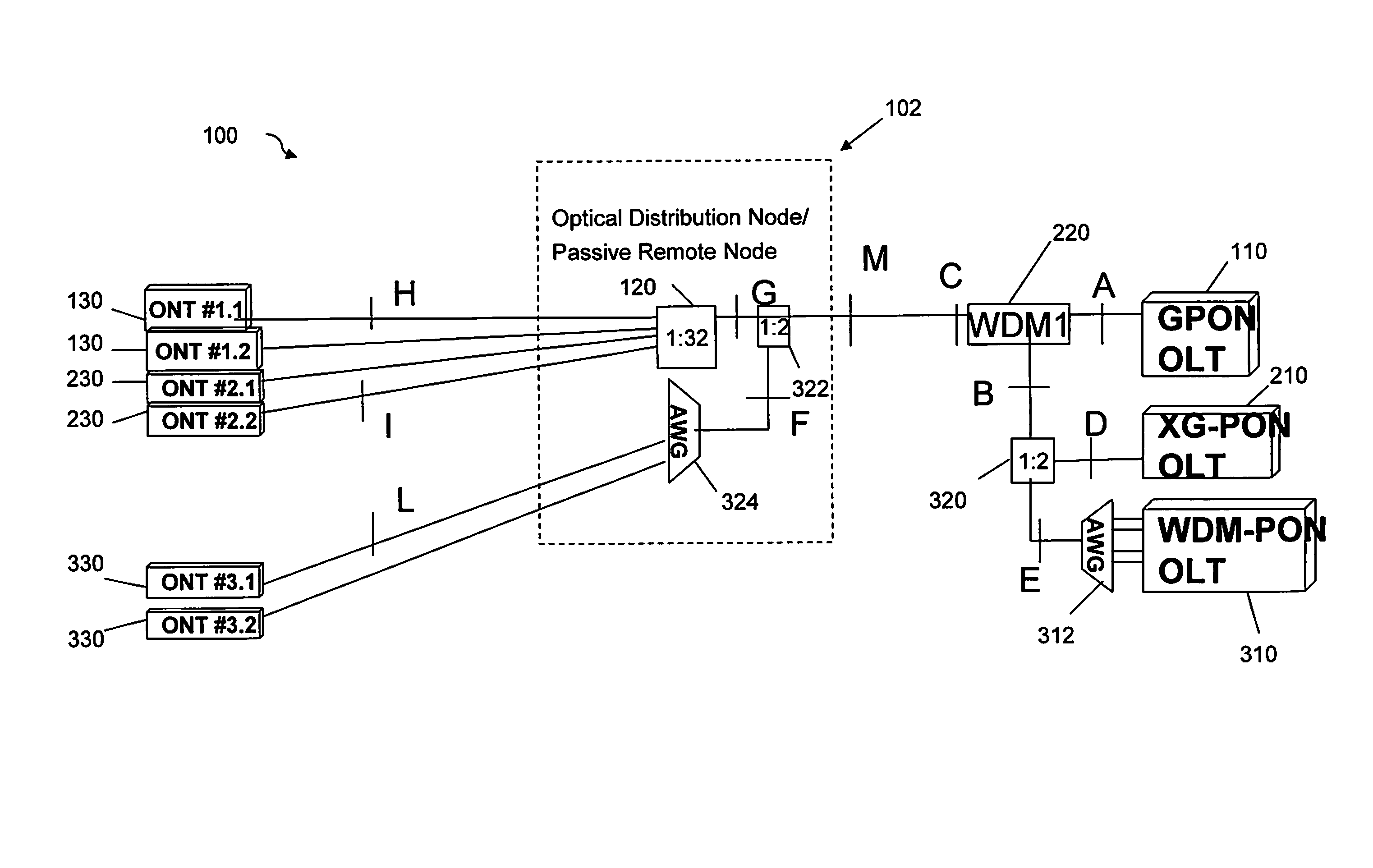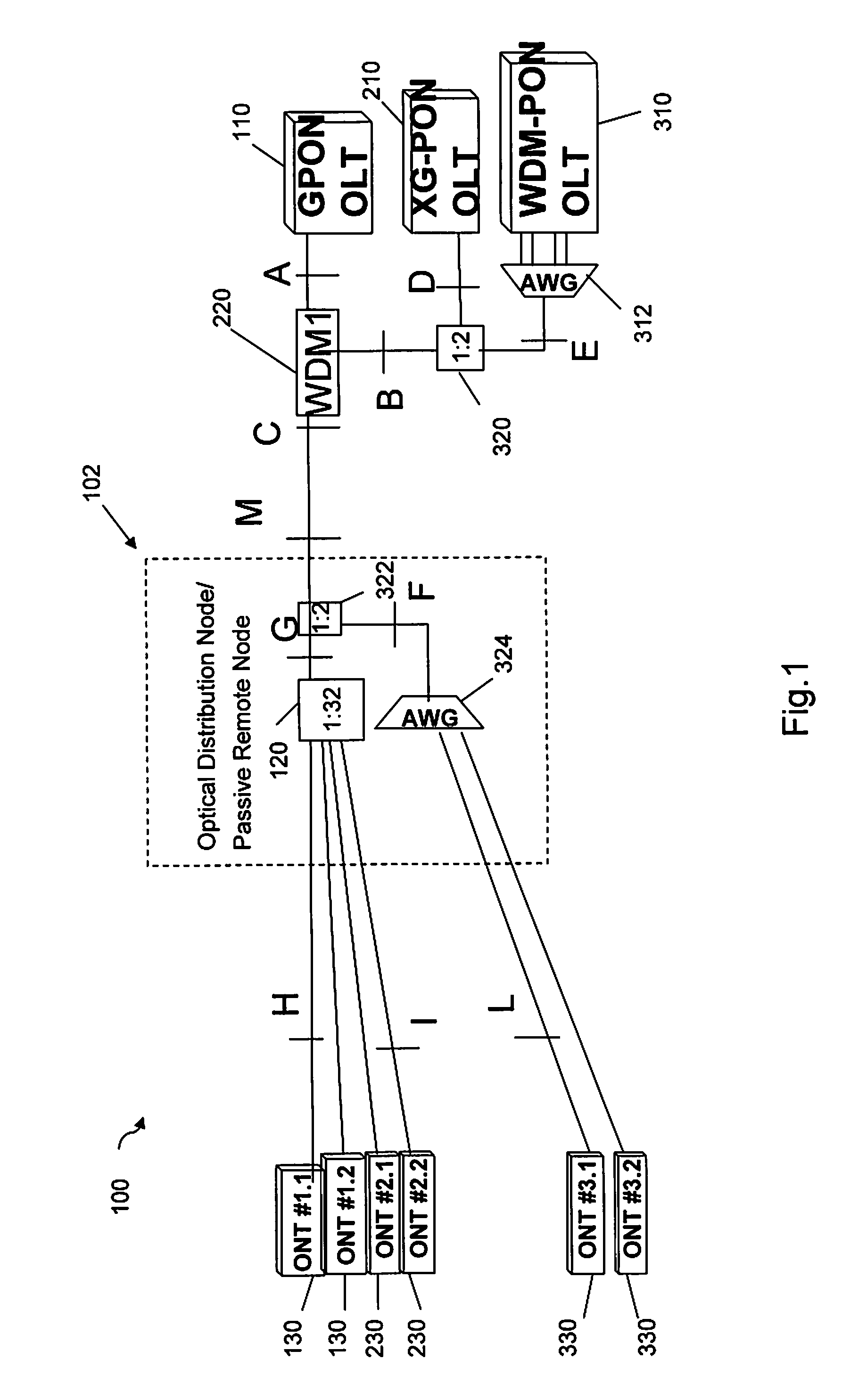Optical network
a technology of optical networks and optical fibers, applied in the field of optical networks, can solve the problems of not being able to use such wavelengths in none-wdm systems, and achieve the effect of efficient us
- Summary
- Abstract
- Description
- Claims
- Application Information
AI Technical Summary
Benefits of technology
Problems solved by technology
Method used
Image
Examples
Embodiment Construction
[0034]The present inventors has realised that whilst the next generation of fibre access networks may rely on WDM techniques, it can be desirable to upgrade existing fibre access networks such as PON with faster bit-rate systems. For example, an existing GPON could be upgraded by incorporating 10G PON (i.e. passive optical network technology configured to transmit at 10 Gb / s, four times the bit-rate of GPON systems).
[0035]The present inventors have therefore proposed a suitable system architecture which would allow telecom operators to re-use the same fibre of a GPON system to upgrade to utilising 10G PON (e.g. in a first upgrade or provisioning step), and then to upgrade the same fibre network to WDM PON (e.g. in a second upgrade or provisioning step) whilst minimising the impact on existing equipment, minimising the disruption of the network required for each upgrade, and allowing continued use of the previous equipment after each upgrade.
[0036]FIG. 1 is a schematic diagram of an ...
PUM
 Login to View More
Login to View More Abstract
Description
Claims
Application Information
 Login to View More
Login to View More - R&D
- Intellectual Property
- Life Sciences
- Materials
- Tech Scout
- Unparalleled Data Quality
- Higher Quality Content
- 60% Fewer Hallucinations
Browse by: Latest US Patents, China's latest patents, Technical Efficacy Thesaurus, Application Domain, Technology Topic, Popular Technical Reports.
© 2025 PatSnap. All rights reserved.Legal|Privacy policy|Modern Slavery Act Transparency Statement|Sitemap|About US| Contact US: help@patsnap.com



